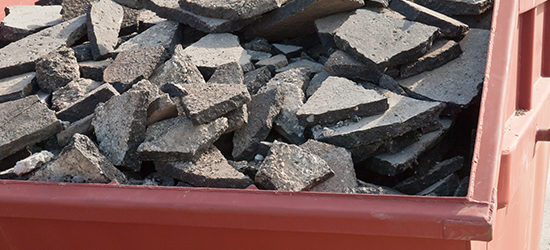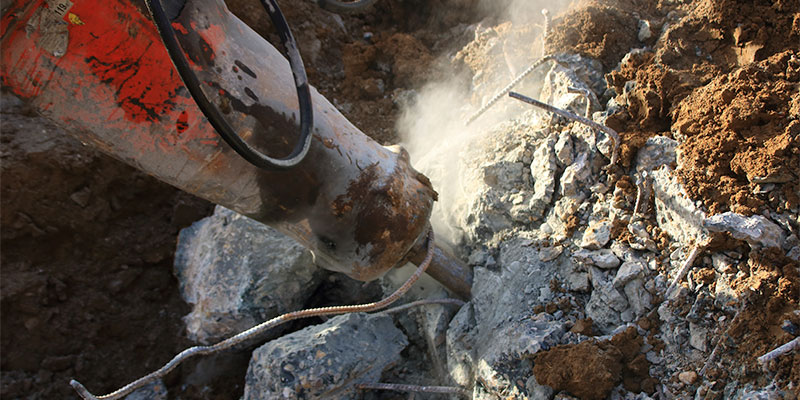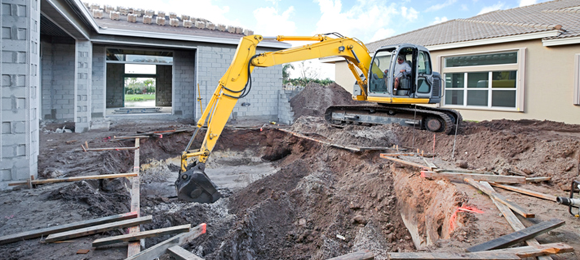
Updated January 23, 2023
Construction and demolition (C&D) debris isn't like everyday waste.
You can't simply toss it in your trash, and have it taken away by your local trash hauler.
Learn how to dispose of demolition debris properly while saving money and helping the environment.
C&D debris is the nonhazardous material that results from a construction, demolition, remodeling, or repair project.
Some of the most common types of C&D debris include:
- Concrete
- Bricks
- Wood
- Plaster
- Drywall
- Metal
- Plumbing fixtures
- Insulation (non-asbestos)
- Roofing materials
- Glass
- Wiring
- Rock
- Soil
Find a demolition contractor near you

Our landfills and environment are becoming clogged with waste, so it's hugely important to divert your C&D debris from the landfill whenever possible.
Do what you can to find alternative routes, like reusing the materials, donating them to others, or recycling them.
If these options are available to you, you should do whatever you can to avoid sending your C&D debris to the landfill.
This should go without saying, but never illegally dump your C&D debris.
Not only is it against the law, but it decreases property values, costs money to clean up, and causes future health risks.
How to reduce the amount of C&D debris generated during a project:
While reducing the amount of debris your demolition or construction project generates is challenging, it is possible if you are careful.
When constructing buildings, take time to estimate the materials you'll need as accurately as possible and keep the project as organized as possible.
For demolition projects, it's a little more difficult to reduce debris, as it's essentially the point of demolition.
However, deconstruction is a great way to minimize waste.
Deconstruction is basically reverse construction—taking apart a structure piece-by-piece—with the intention of salvaging as much of the structure's materials as possible.
What is saved is then used for another construction project, sold, or donated.
What can't be reused is ideally recycled at the nearest recycling facility.
The deconstruction process takes longer than traditional mechanical demolition (and subsequently costs more) but it pays off if there are adequate salvageable materials, and it keeps reusable materials out of landfills.
Deconstruction not only helps the environment but our community, too.
Learn more about deconstruction and compare it to demolition.
How to reuse C&D debris:
There are hundreds of ways to reuse C&D debris.
If you don't have a use for your materials, perhaps someone else will.
Donating materials for reuse can save you thousands of dollars in disposal fees and help your community and environment, too.
Clean C&D debris, like concrete or soil, is especially re-useable.
When materials are separated and salvaged appropriately, the materials can be reused for a variety of other projects.
How to recycle C&D debris:
Recycling fees are significantly lower than landfill disposal fees, and with thousands of recycling facilities around the country, it's easy, too.
Concrete, asphalt, wood, aluminum, corrugated cardboard, and all kinds of other metals can be recycled.
There are a few different ways C&D debris can be recycled:
- On-site processing: Recyclable materials are processed on-site, where they are made ready for reuse.
- Mixed material collection - Recyclable materials are transported from the job site to a waste facility where they are sorted and then sent to a processing facility to be recycled.
- Source Separation: Recyclable materials are separated from one another at the job site and then sent to the nearest facility to be recycled.
How to dispose of C&D at a landfill:
If you are unable to reduce, reuse, or recycle your C&D debris, you can have it hauled to the landfill by a dumpster rental provider.
However, not all haulers accept all forms of debris, so make sure you clarify this with them during the quoting process.
In addition, if you have hazardous materials, like lead-based paint or asbestos, to worry about, you will need to have it remediated and properly disposed of prior to demolition.


